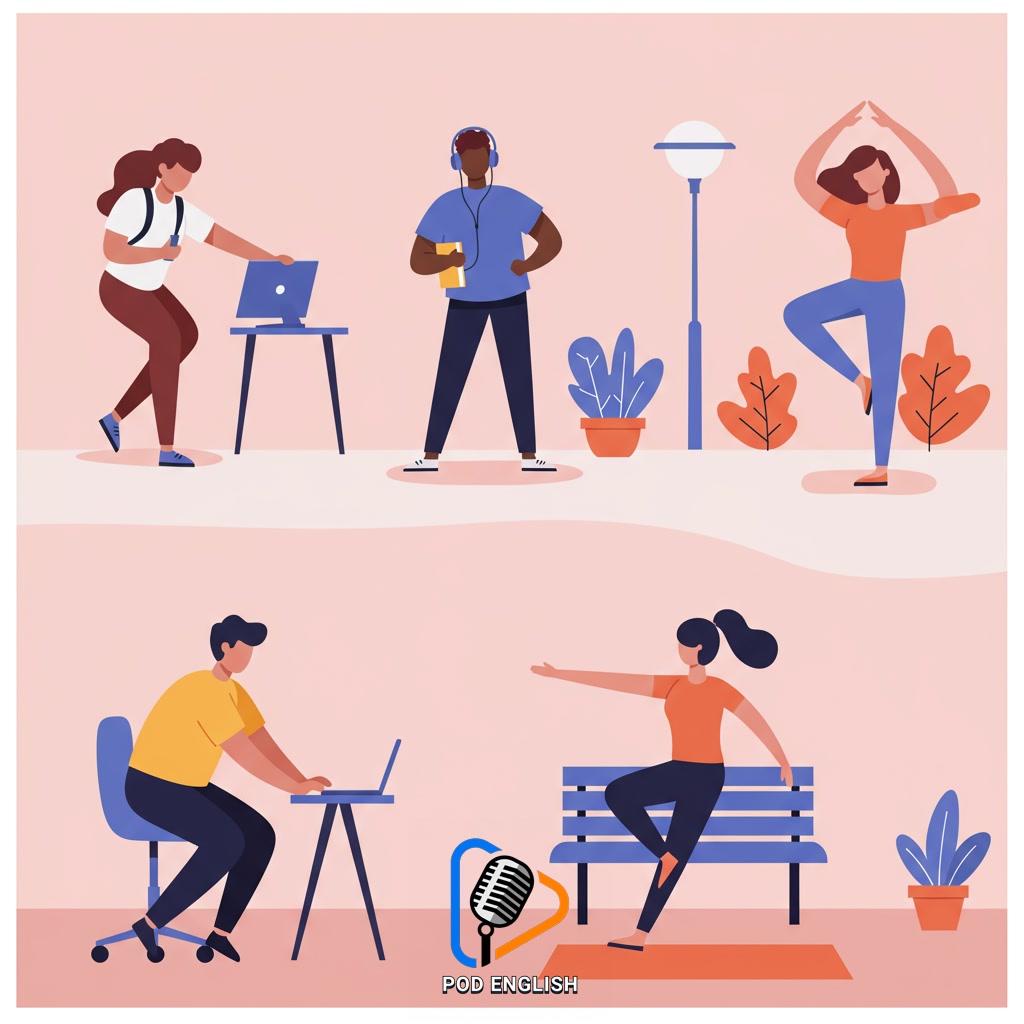Learn English
Exercise to Beat Study Burnout for English Learners

This content focuses on practical ways English learners can use physical activity to combat study burnout. It presents exercises and strategies designed to refresh the mind and maintain motivation during the process of learning English. By integrating movement, individuals can effectively manage stress and enhance their long-term engagement with language study, ultimately improving their progress in learning English.
Table of Contents
Section 1: Understanding Study Burnout in English Learning
Study burnout is a common challenge for many English learners, and understanding what it is is the first step to overcoming it. It’s not just feeling a little tired; it’s a state of physical, emotional, and mental exhaustion caused by prolonged or excessive study stress. For those learning English, this can manifest as a significant loss of motivation, feeling overwhelmed by the sheer volume of vocabulary and grammar, difficulty concentrating during study sessions, or feeling frustrated by slow progress. You might start skipping study days, find it hard to remember new information, or feel a general sense of dread when thinking about your English practice. Recognizing these signs is crucial because burnout can seriously hinder your learning progress and overall well-being.

Section 2: The Connection: How Exercise Combats Burnout and Boosts Learning
Exercise is a powerful tool against study burnout because it directly affects your brain and body in positive ways. When you move, your body releases chemicals like endorphins, which improve your mood and reduce feelings of stress and anxiety. It also helps lower cortisol, the stress hormone. Increased blood flow to the brain during exercise can sharpen your focus, improve memory, and boost cognitive function – all essential for learning English. Taking a physical break also gives your mind a chance to rest and reset, making it easier to return to your studies with renewed energy and concentration. This connection means that physical activity is not just a distraction from burnout, but a key part of overcoming it and becoming a more effective English learner.

Section 3: Types of Exercise to Beat Burnout
To effectively combat study burnout, English learners can incorporate various types of physical activity into their routine. Simple activities like taking a brisk walk outside for 15-20 minutes can significantly clear your head and reduce mental fatigue. Stretching exercises, especially for the neck, shoulders, and back, can release tension built up from sitting for long periods. Gentle aerobic exercises, such as cycling or jogging, boost circulation and endorphin release, further improving mood and energy levels. Yoga or Pilates can also be beneficial, combining physical movement with mindfulness techniques to calm the mind. Even short bursts of activity, like doing jumping jacks or push-ups for a few minutes, can provide a quick energy refresh. The key is to choose activities you enjoy and can easily fit into your study schedule, providing a much-needed physical and mental break.

Section 4: Integrating Exercise into Your English Study Routine
Integrating exercise doesn’t mean sacrificing study time; it means enhancing it. Look for opportunities to combine movement with your English learning. For instance, listen to English podcasts or audiobooks while walking or jogging. Use flashcards during short breaks between exercise sets. You could also try active study methods like pacing while reciting vocabulary or acting out short dialogues. Schedule dedicated short exercise breaks throughout your study session, maybe 5-10 minutes every hour or two, to get your blood flowing and refresh your mind. Consistency is key, so find activities you enjoy and make them a regular part of your English study routine, not just an afterthought. This mindful integration helps manage stress and keeps you motivated for long-term learning.

Section 5: Tips for Consistency and Long-Term Well-being
To truly benefit from incorporating exercise into your English learning routine and combat burnout effectively, consistency is key. Start by integrating small, manageable bursts of activity into your day, rather than aiming for lengthy, intense workouts immediately. Schedule these movement breaks just like you would a study session, perhaps linking them to specific study milestones, such as taking a short walk after completing a chapter or doing some stretches during a grammar review. Find physical activities you genuinely enjoy, as this makes it much easier to stick with them over time. Remember that the goal is long-term well-being, which supports sustained mental energy and focus for your English studies. By making exercise a regular, enjoyable part of your life, you build resilience against burnout and enhance your overall learning journey.


